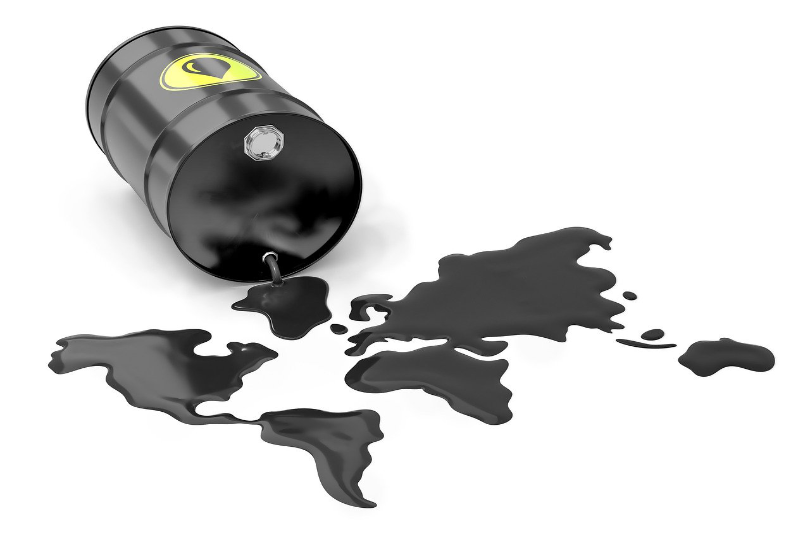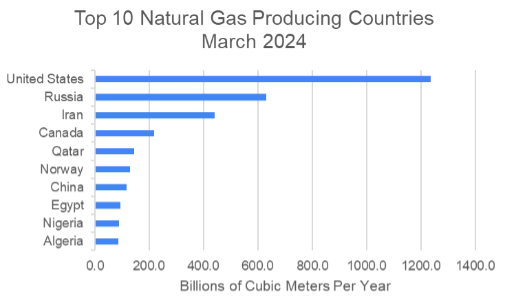Fossil Fuel Producers Target 4X Increase in New Projects by 2030
ON 03/30/2024 AT 04 : 07 AM

The data should blow away any illusions world leaders and climate scientists have about global plans to cut fossil fuel emissions and save the planet from the climate crisis.
According to the just-released Global Oil and Gas Expansion Tracker report produced by Global Energy Monitor, an NGO, 2023 was a banner year for fossil fuel prospecting across the world. Last year, the total amount of new fossil fuel fields either newly authorized for extraction from old fields, or recently discovered and then also approved for production equalled more than the total of all existing oil and gas reserves on the European continent.
The Tracker data reveals that fossil fuel enterprises around the world completed their survey drilling and analysis of a minimum of 20 major new production fields for either crude oil or natural gas last year. Those newly certified fields will contribute roughly eight billion barrels of oil equivalent (boe) this year, with more likely from the same fields as the years progress and more data is uncovered about how to properly exploit the new discoveries.
Based on data from multiple sources, including reports provided by the fossil fuel companies themselves, those new production amounts are about to skyrocket. Thanks to the discovery of 19 new fossil fuel reserves with estimated output levels of 7.7 billion boe in 2023 which were barely “on the radar” in 2022, further “deep dives” exploring possible extensions of existing fields, and extensive new exploratory projects either already greenlit or in the budgets of the companies and nations involved, the industry expects to formally sanction (authorize for production) an estimated 31.2 billion boe of new reserves in calendar year 2030. That works out to just short of quadrupling the level of new production per year in just six years.

Oil production worldwide hit a new output rate of 28.42 billion barrels of oil/year in 2023. 68 countries contributed to that total, with the United States hitting its own new high annual production rate of 3.929 billion bbl/y, while also topping the list as the largest oil producing country in the world. It also topped that list not just in 2023 but for the previous five years in a row.
The U.S. made it to that level thanks to mostly wide-open access to both onshore and offshore reserves, drilling on federal lands which expanded substantially when Trump was in the White House, lucrative and growing fossil fuel industry subsidies, extensive export shipment authorizations which made increased production more profitable, and a government strategy aimed at saying number one spanning the administrations of Bush, Obama, Trump, and Biden, and transcending political divides. Another factor in U.S. production is the unregulated fracking as a method of extraction and the allowance of wholesale destruction of the environment.
In second place was Saudi Arabia, with total production running 3.728 billion bbl/y.
While that was no surprise, that Russia was the number three ranked oil producer in the world did come as a shock to many. Despite sanctions related to Moscow’s invasion of Ukraine in February 2022, the country has succeeded in developing an alternate supply chain delivery network, as well as increasing shipments for major users such as China and India.
In fourth place was Iran, which like Russia also found its way around sanctions. It managed to ship at a rate of 1.895 billion bbl/y averaged over last year.
Coming up fifth was Canada, whose fracking fields and tar sands in Alberta and elsewhere continue to produce at a high rate. Its average production rate in 2023 was 1.524 billion bbl/y. Its production will get a massive boost in 2025 as the government funded Trans Mountain pipeline triples tar sands bitumen exports to China.
Worldwide natural gas production rates for 2023 rose to 3.954 trillion cubic meters per year. At the top of the 62 natural gas producers in 2023 was the United States. The U.S. shipped at annualized average rate of 1.236 trillion cubic meters per year. It did so propped up by the same factors which led to the growth of its oil industry, with federal as well as some state subsidies, and easy government-authorized access to new fields to explore being the most important ones.

In a distant second place for 2023 natural gas outputs was Russia, which shipped at an annualized rate of 629.5 billion cubic meters per year (bcm/y), according to the Global Energy Monitor Data. Other sources show that represents about a 7.5% decrease in production levels from the amount of gas Russia shipped in 2022. The 2022 values were down by an even larger percentage of 20% compared to 2021. Those values reflect the impact mostly from European sanctions on Russia natural gas shipments after it marched its military into Ukraine, which drastically cut back pipeline shipments to Germany and other locations. The destruction of the Nord Stream pipeline substantially reduced gas flows to Europe. Once again, that Russia was able to sustain close to its lower-than-normal 2022 gas production rate, despite what must have seemed like crippling sanctions, illustrates how adept the Kremlin is at finding ways around Eurozone restrictions which forced up the cost of energy throughout the region and contributed to some of the highest inflation rates in the world in 2022 and 2023.
Coming in at third, fourth, and fifth rank for global natural gas production rates for 2023 were Iran with 442 bcm/y, Canada with 218.2 bcm/y, and Qatar at 144.9 bcm/y.
Besides the overall enormous growth in total oil and gas production worldwide last year, another important data point to track is where the new gas and oil sites that were discovered last year were concentrated. According to the report, the United States had the largest number of new oil and gas projects in the world for all of 2022 and 2023. While that matches what one might expect based on its overall rank as the largest producer of both oil and gas overall, a surprising data point was that fossil-fuel-rich Guyana accounted for 40% of all new oil production field authorizations made globally in both 2023 as well as 2023, ranked by projected total output to come from those fields. Those fields may not be exploited as rapidly as originally expected now that Venezuela has laid claim to them and 2/3s of Guyana territory known as Essequibo.
Further, prospecting for new sites is expanding geographically as overall production increases. Out of the 19 new discoveries for either oil and gas made worldwide in 2023 noted in the Global Oil and Gas Expansion Tracker report, 8 were in the Americas, with North America the site for 3 of them and Latin America for 5; 5 were in Asia; 4 in Africa; and 2 in Europe.
That geographical diversity is also contributing to a global shift in where much of the world’s new oil and gas is coming from. As the authors of the report noted, “South America and Africa are global hotspots for new oil and gas projects, while four countries that previously had little to no production — Cyprus, Guyana, Namibia, and Zimbabwe — account for over a third of the volumes producers are hoping to exploit.”
While all this new oil and gas will contribute to a worldwide boom for the fossil industry, it also will produce far more fossil fuel emissions on the planet than ever before. It also seals the final “coffin” on any hopes for nations of the world to achieve anything close to greenhouse gas emissions output reductions previously agreed to as part of the Paris Accords at the UN Climate Change meetings almost a decade ago.
The rate of growth of new oil and gas production around the world also shows how futile the warnings were in another report released in early 2021 by the International Energy Agency (IEA). In that report, the IEA said a key element of any plan to meet net zero carbon emissions by 2050 required an end to fossil fuel outputs from newly discovered oil and gas fields, effective immediately. It also called for a cutback in investments in existing oil and gas fields, plus a commitment to shift to zero emissions versions of cars and trucks by 2035.
In an interview at the time, IEA Executive Director Faith Birol said that “If governments are serious about the climate crisis, there can be no new investments in oil, gas and coal, from now – from this year.”
What the new Global Energy Monitor report illustrates is that it is clear the world is filled with corrupt governments and evil corporations placing greed ahead of climate-conscious governance. The result will be the continued acceleration of the pace of global heating and all the associated disastrous by-products coming from it, including more extreme weather, rising ocean levels, lethal temperatures and mass famine from crop loss.
